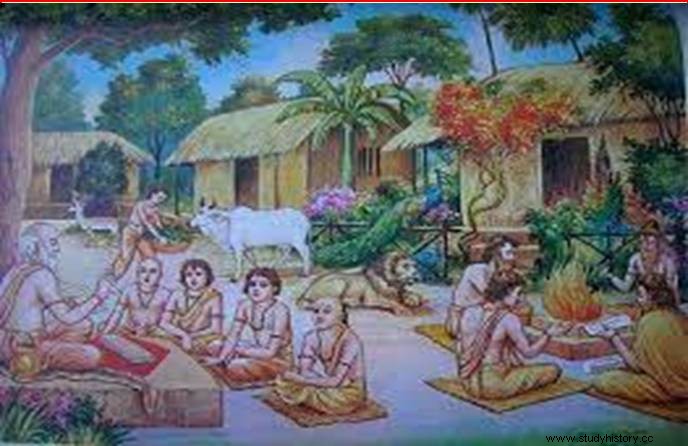
Major centers of Jain education in ancient India
Anhilpatan (Anhilpatan, Anhilwara)
Anhilpatan, the capital of the Chalukya dynasty rulers of Gujarat, was famous as a center of learning in the pre-medieval period. Along with Hindu-dharma-philosophy, Jain-dharma and philosophy were also taught here. Many Chalukya dynasty kings were interested in the advancement of knowledge and learning. Scholarly writers like Somprabhacharya, Hemchandra, Ramchandra, Udaychandra, Jai Singh, Yashpal, Vatsaraj and Merutung wrote important texts in various languages like Sanskrit, Prakrit, Apabhramsa etc. in the state shelter of Anhilpatan.
Among them Hemchandra became the most famous scholar, who composed various texts on various subjects like grammar, verses, vocabulary, literature, thesaurus, history, philosophy etc. Anhilpatan lost its educational and religious importance when the Muslims invaded Gujarat.
Jalore
Jalore was a major center of Jains in the 7th-8th century AD. In the eighth century, Udyotan Suri composed a famous treatise called Kuvalayamala. Under the inspiration of the famous Jain scholar Hemchandra, Kumarpal Chaulukya built the Kuvar Vihara Jinalaya in Jalore in AD 1164. In AD 1185, Yashovir, the minister of Raja Samar Singh, got this temple renovated. Due to this Jalore became a major center for the study of Jain texts. After independence, Muni Jin Vijay took the texts of Jalore Jinalaya to Ahmedabad.
Kanchi
Jainism was spread by Kund Kundacharya in Kanchi in the 1st century AD. Jainism was spread by Akalank in the 3rd century AD. The Kalbhar kings, the predecessors of the Pallavas, accepted Jainism. Thus, due to the state patronage in Kanchi, Jainism spread a lot. The Pallava kings Simhavishnu, Mahendra Varman and Simhavarman (AD 550-560) also followed Jainism.
